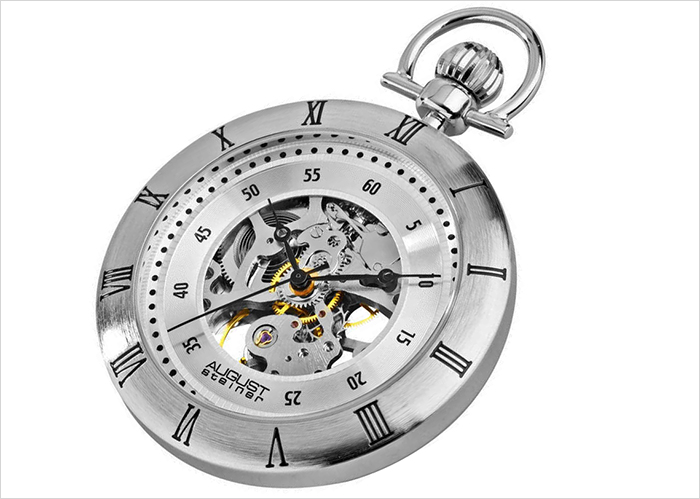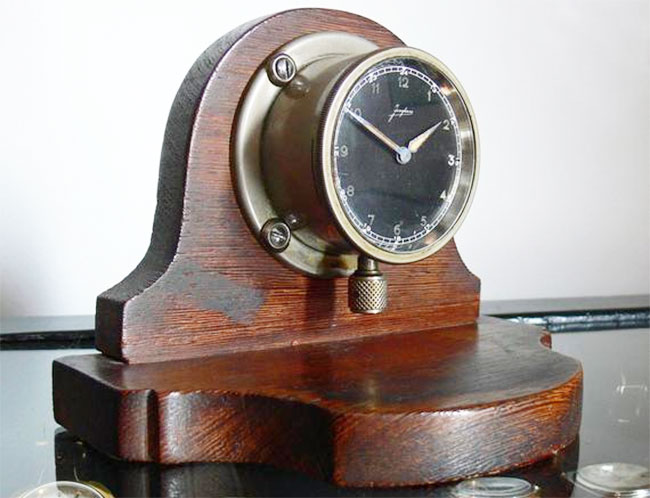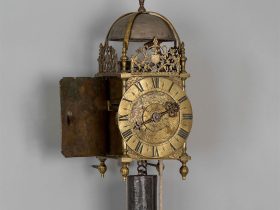
Modern clock radios are a product of a long process of practical evolution.
When radios became a common home appliance in many households, it did not take long for industrial designers to apply innovative features on them, which paved the way to the original designs of clock radios to materialize.
When early models of clock radios were available in the market, they immediately became a hit to many consumers.
They simply loved clock radios for their great advantages. They were not just a source of information and entertainment, but also a great help to keep them on time.
Who invented the clock radio?
It was not very clear who first thought of the idea of incorporating the clock into the radio. But the first known inventor who said to have utilized the idea was the French designer, Raymond Loewy, in 1931.
Loewy successfully integrated his clock design into a radio for Westinghouse Company.
The result was what he called the Skycraper clock-radio imitators, a 54-inch tall Columaire Jr.
What is retro clock radio?
Today, when we think of retro clock radio, the picture that comes to mind is an old-school portable radio set with a clock, usually battery powered. The first vintage clock radio as we know it today was designed by James F. Reynolds in 1940s.
Reynolds had not only combined the clock and the radio, but he was also the first who put an alarm system on it.
As with the common alarm clocks during that time, which were too loud that they could rouse the heaviest sleeper with a sudden jolt, clock designers tried to come up with an idea of making a clock that would feature a gradual wake alarm.
In 1950s, Herbert Merrill Dimond had finally figured out the issue by inventing the clock radio that first featured the snooze alarm.
At present, both vintage collectors and savvy buyers would prefer to buy retro clock radio for its classic design – a great reminiscent of its glorious past.
Noted retro clock radio makers
Due mainly to its strong claim to have first manufactured the first retro clock radio in history, the Westinghouse Electric Corporation is on the top among popular vintage clock radio makers.
Westinghouse’s antique clock radio models are sought after by collectors worldwide.
Other notable vintage clock radio makers also include G.E., Hallicrafters, TIMCO, Zenith, Trav-ler, Sparton, Bose Wave, Timex, and SuperSonic.
Antique and trendy retro clock radio collectibles
If you are into antique clock radio collecting, try then to find a rare Columaire Jr designed by Westinghouse, a Zenith model AM/FM clock radio, or a GE Tombstone Clock Radio.
Or if you seek for trendier retro-style clock radio, your sure bet are the Bose Wave, Timex, Audiovox, Coby, GBX, SuperSonic, Revo, and Crosley. Depending on the range of your budget, you can surely find a good model that is just right for you.
One great example, which you can see in the picture, is a singularly trendy and flashy retro-looking clock radio that has a built-in system that allows you to charge your Apple iPod.
Here are some key features and characteristics of retro clock radios
- Design Aesthetics: Retro clock radios are known for their design aesthetics that evoke a sense of nostalgia. They often feature elements inspired by the 1950s, 1960s, or 1970s, including bold colors, chrome accents, rounded edges, and vintage-inspired typography.
- Clock Functionality: These devices incorporate a clock display, typically with large, easy-to-read numerals, often in retro font styles. Some models may include additional features like alarm clocks with snooze functions.
- AM/FM Radio Reception: Retro clock radios include AM and FM radio receivers, allowing users to listen to their favorite radio stations. They typically have tuning knobs or buttons to adjust the radio frequency.
- Manual Controls: Many retro clock radios maintain the tactile experience of the past by using manual controls, such as knobs and switches. These controls contribute to the vintage look and feel of the device.
- Speaker and Sound Quality: The built-in speaker on retro clock radios may not be as advanced as those on modern standalone speakers, but they often deliver decent sound quality for listening to radio broadcasts and music.
- Bluetooth Connectivity: Some modern retro clock radios include Bluetooth technology, allowing users to connect their smartphones, tablets, or other Bluetooth-enabled devices to play music wirelessly.
- Auxiliary Inputs: Retro clock radios may also have auxiliary input ports, such as 3.5mm audio jacks, for connecting external audio sources like MP3 players or other non-Bluetooth devices.
- Portability: While some retro clock radios are designed to sit on a bedside table or desk, others are more portable and may have carrying handles. This makes them easy to move from room to room or to take on the go.
- Battery Backup: Some retro clock radios come equipped with battery backup systems, ensuring that the clock continues to keep time and alarms remain functional in the event of a power outage.
- Modern Features: Despite their retro appearance, some models include modern features such as digital displays, digital tuning, and compatibility with digital music formats.









Leave a Reply